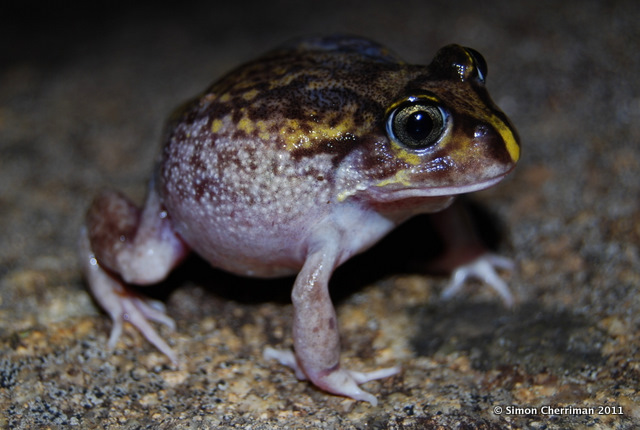In
the Noongar Aboriginal calendar there are six seasons, and this
depiction much more accurately (compared to the European version)
represents the changes we see in our environment throughout the course
of a year in the south-west of Western Australia. With the arrival of
April, we have just entered Djeran, the season of cooler change.
Nothing
detects the change in season better than local wildlife who are often
waiting for a cue to focus on a particular food, migrate, or commence
breeding. The latter applies to a group of animals that you can hear
right now if you listen closely around dry creek beds and swamp edges
in the Perth hills.
One example of this group is pictured above. This incredible creature is a burrowing frog - specifically, a Moaning Frog (Heleioporus eyrei).
It is one of several species in the south-west of Western Australia
that spends much of its life under ground. Moaning Frogs excavate their
way into soft soil using their back legs, digging down deep until they
find enough moisture to keep them hydrated. They stay here, hiding away
from the hot sun until they are lured out by warm, moist nights to
forage.
Coinciding
with the arrival of Djeran, male Moaning Frogs begin calling to attract
mates. At dusk and into the night, their mournful moan is emitted from a
shallow burrow, the entrance of which helps resonate the sound to the
outside world. If you look carefully in the muddy banks of creeks and
dams, you can find the entrance to the burrow.
 |
| The Hooting Frog has bright yellow markings. |
 |
| Western Spotted Frogs have distinct spots on their back. |
Several
other species of burrowing frog can also be found in the Perth region.
Pictured above is a rarer species, the Hooting Frog (Heleioporus barycragus),
which prefers heavier soils in the Darling Range. As its name suggests,
the call of this frog is a bit what you imagine an owl to sound like
(although just to confuse things, it doesn’t sound like any of our
Australian owl species!). If you live east of the Darling Scarp you may
be lucky enough to hear the distinctive calls of Western Spotted Frogs (Heleioporus albopunctatus). The distinctive spots (from which its species name is
derived: albo = white, punctatus = spotted) and smooth brown to purplish
colour make this a beautifully marked animal. Their call is a higher
pitched, quicker ‘whoop’ sound, and can often be heard from ditches at
the side of country roads in the Wheatbelt region.

Great, thanks for illuminating the mystery of what I've always called the misery toad!
ReplyDeleteYou're welcome! Always glad to be helping solve mysteries :)
Delete